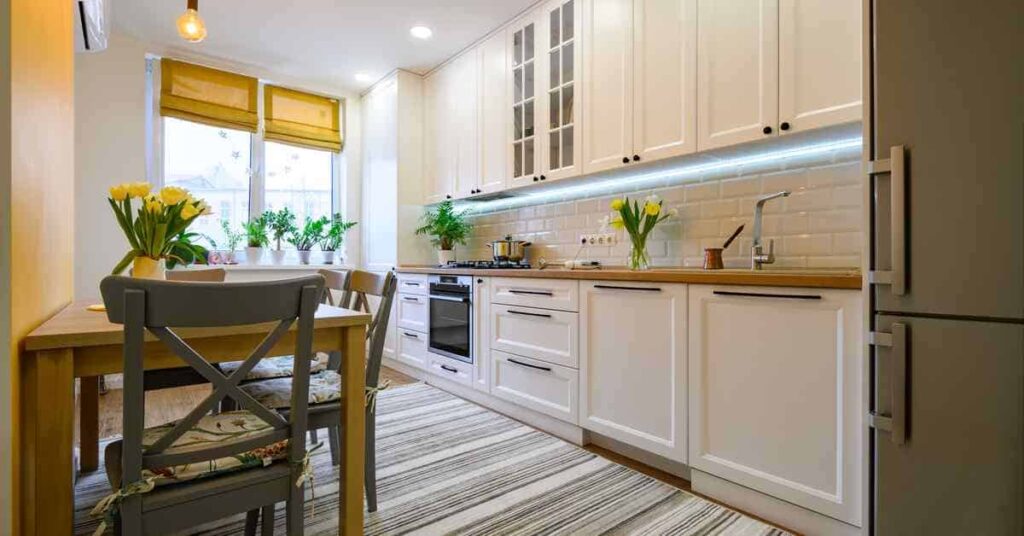Stained wood can bring warmth and richness to any space, but over time, interior design preferences and trends may change. If you find yourself longing for a lighter, more contemporary look without the expense of replacing your wood furnishings or floors, lightening the wood stain is a practical solution. This transformation not only refreshes your space but can also highlight the natural beauty of the wood grain, making your pieces look as if they’re brand new. Here’s how to easily lighten stained wood, ensuring a successful revamp of your décor.
Understanding Wood and Stain Types
Before beginning the process, it’s crucial to identify the type of wood and existing stain. Some woods lighten more easily than others, and different finishes (like oil-based versus water-based stains) may require specific approaches. Knowing what you’re working with helps in choosing the most effective products and techniques for your project.
Materials Needed
- Sandpaper (coarse and fine grit)
- Wood stripper (if necessary)
- A paintbrush or a clean rag
- Wood bleach or a lightening solution
- Protective gloves and eyewear
- Dust mask
- Polyurethane or another sealant
- Clean cloths
Step-by-Step Guide to Lightening Stained Wood
- Prepare the Area: Work in a well-ventilated space to avoid inhaling fumes from wood stripper or bleach. Lay down drop cloths to protect surrounding areas.
- Strip Old Finish: If the wood is covered in a sealed finish or if the stain is very dark, use a chemical wood stripper. Apply with a brush according to the manufacturer’s instructions, leave it to sit for the recommended time, and then scrape off with a plastic scraper. After stripping, clean the wood with a damp cloth and let it dry completely.
- Sanding: Sand the wood using coarse-grit sandpaper to remove any remaining finish and smooth out the surface. Progress to a finer grit to ensure a smooth base for lightening. Always sand in the direction of the wood grain to avoid scratches. Wipe away all dust with a tack cloth or a damp rag.
- Applying Wood Bleach: Wood bleach is effective for lightening the actual color of the wood stain. There are different types of wood bleach, so choose one that is suitable for your type of wood and the degree of lightening you want. Carefully follow the instructions, usually involving applying the bleach evenly across the wood surface with a brush or rag. Allow it to sit for the recommended time before neutralizing or rinsing as directed.
- Neutralizing the Bleach: Some types of bleach require neutralizing with a vinegar solution or clean water. This step is crucial to stop the bleaching action and prevent damage to the wood.
- Final Sanding and Cleaning: Once the wood is dry, give it a final light sanding with fine-grit sandpaper. Clean off any dust thoroughly.
- Apply a New Finish: Seal the newly lightened wood with a polyurethane or another preferred finish. This will protect the wood and enhance its appearance. Apply as many coats as necessary, allowing ample drying time between each coat.
- Buff and Polish: After the final coat of sealant has dried, buff the surface to a soft sheen with a clean cloth, enhancing the wood’s natural beauty.
Tips for Best Results
- Always test the stripping, sanding, and bleaching processes on a small, inconspicuous area of the wood to predict the outcomes.
- Be patient between steps, particularly when waiting for products to cure or dry.
- Maintain the wood’s health by using gentle, wood-friendly products.
Conclusion
Lightening wood stain is a rewarding project that can significantly alter the appearance of your wooden furniture or floors. With the right tools, techniques, and a bit of elbow grease, you can transform dark, outdated wood into stunning, refreshed pieces that better suit your current décor style. This process not only revives your wood but also extends its life, making it a sustainable choice for home improvement enthusiasts.















